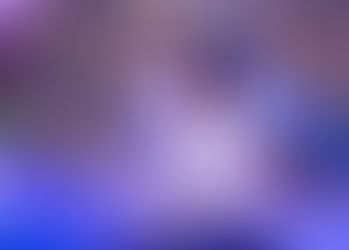John Moores Painting Prize 2018 shortlist revealed
- Catherine Jones
- Jun 21, 2018
- 3 min read

The five shortlisted paintings vying for the prestigious John Moores Painting Prize have been revealed.
The winner of the anonymous submission prize, which celebrates its 60th anniversary in 2018, will take home £25,000.
All the shortlisted artworks are due to go on show at the Walker Art Gallery next month alongside more than 50 other paintings chosen for exhibit, and as part of the Liverpool Biennial.
The works were judged by a panel of jurors including the artists Monster Chetwynd, Turner Prize winner Lubaina Himid, Bruce McLean and Liu Xiaodong, and curator Jenni Lomax.
Lubaina Himid said: “One of the most striking things about this year's John Moores Painting Prize shortlist is that all five artists are obviously deeply passionate, not only about the hard-won process of painting itself, but more importantly for me, about what a painting can do when presented in a meaningful conversation with an audience.
“We’ve chosen works which seem to want to engage in many different ways – sometimes challenging and provoking, sometimes so bold they almost caused us to laugh out loud. And yet in amongst these predominantly large-scale, striking works, there are still and gentle moments which seem to overwhelm us with their strength.”
Here are the five shortlisted paintings with descriptions.
GIANTS, 2017, Joseph O’Rourke. Oil, acrylic and spray paint on two canvases.

O’Rourke painted GIANTS after returning from living in Budapest for six months. The city felt “gigantic” to the artist as a result of its geographical and historical size, from its impressive statues and monuments to its unique landscape, with the River Danube flowing through it. The title of the painting “refers not to the mythological beings but to the idea of what ‘giants’ really exist,” O’Rourke explains.
Joseph O’Rourke was born in Nottingham and studied at Manchester School of Art 2013-14 and Edinburgh College of Art 2014-17.
Quilt, 2017, Billy Crosby. Acrylic paint, metal paint, foam, coins and cardboard on board.

At first glance, Quilt appears to be wooden, yet it is in fact made from woven cardboard and foam. It is reminiscent of a padded cell door. Crosby calls his painting “an anti-quilt” – the opposite of traditional quilts which are often personal, emotive items, recycled from old garments by a maker with a personal history linking them to the material. Crosby describes his approach as “weaving together differing perceptions of material and representation into a rich mush.”
Billy Crosby was born in Dumfries and Galloway and attended London College of Communication 2010-11 and Camberwell College of Arts 2013-16.
King and Queen of Wands, 2017, Jacqui Hallum. Ink on cotton.

In her painting, Hallum draws on imagery ranging from medieval woodcuts and leaded glass windows to tarot cards and Art Nouveau children’s book illustrations. She works across a number of loose cotton sheets, staining and dying them with inks (drawing ink, graffiti ink and squid ink). The sheets move between Hallum’s studio and garden throughout this process, before they are grouped and pinned together, concealing and revealing themselves to create a multi-part work.
Jacqui Hallum was born in Wembley, London and is based in Totnes, Devon. She attended Coventry School of Art and Design 1996-9 and Slade School of Fine Art 2000-2.
The Divide, Beyond Reasoning, 2017, Shanti Panchal. Watercolour on paper

Panchal creates his paintings slowly and meditatively, loading washes of colour onto the surface of textured paper and mixing the colours on the paper, rather than on a palette, to create a fresco-like depth and intensity. The figures in The Divide, Beyond Reasoning hold our attention with a solemn grandeur. Their surroundings are free from detail and they don’t make eye contact with each other, “suggesting a subtle tension or deep emotions beneath the surface,” according to Panchal.
Shanti Panchal was born in Mesar, Gujarat. He attended Sir JJ School of Art, Bombay and Byam Shaw School of Art, London (British Council scholarship) 1978-80.
The Thunderous Silence of Your Presence, 2017, Tom Howse. Acrylic on flax.

Through his painting, Howse explores our approaches towards understanding the complexities of nature, humans and the universe in which we reside. He is interested in how humans can be drawn to cosmological explanations and folklore to sooth their fear of the unknown. Realism and fantasy sit side-by-side in Howse’s painting. He describes this “dichotomy between our quest to know and our fallibility to comprehend” as a driving force in his practice.
Tom Howse was born in Chester and is based in London. He studied at Wimbledon College of Art 2008-11.
The John Moores Painting Prize exhibition is at the Walker Art Gallery from July 14 to November 18.







